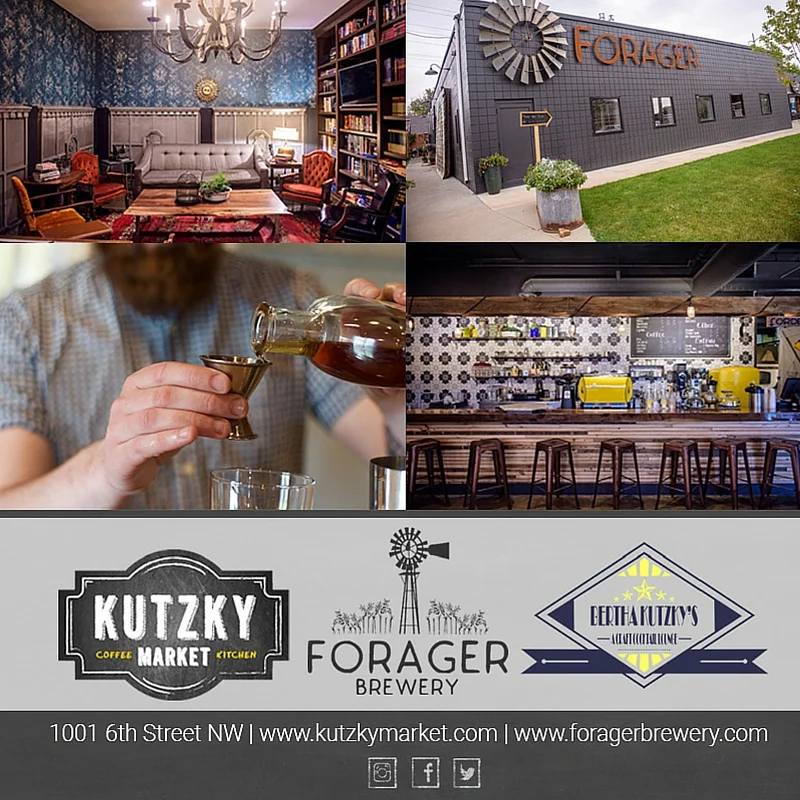Meet the artist: 5 questions for local encaustic artist Beth Sievers
Beth Sievers is an encaustic artist. She has been working in the encaustic medium for the past five years. Encaustics originated with the ancient Egyptians. The medium is a mixture of beeswax and tree resin mixed with pigment, and it must be hot when applied to a stiff porous surface. Sievers has been selling her art at local festivals and also has her work on sale at Dwell Local.
1. So what is an encaustic medium is and how do you use it to create art?
Encaustic medium is a mixture of beeswax, colored pigment such as oil based paints or powdered pigments, and damar, a tree resin. The tree resin is what makes the mixture durable after it sets. Each layer of encaustic medium is fused together using a heat gun. It takes about 6 months for a piece to fully cure. At that point, it won't melt until it's exposed to temperatures above 150 degrees. During application, the encaustic medium is heated to about 200 degrees and applied as a hot liquid on a stiff, porous surface, like wood. It cools quickly which allows for texturing and layering. Encaustic medium gives the artist the ability to create collages and transfers as well as intricate encaustic paintings.
2. What or who inspires your work?
The art of encaustic painting is inspired by the ancient Greeks. The ancient Greeks applied wax and tree resin to their wooden ships to waterproof them. Later, they added pigment to the mixture to decorate their vessels. I like the fact that this art form has such a functional origin. While this history inspires me, I am also inspired when I see or hear other artists' creations. Seeing others' creativity in action gets me excited and inspired to create my own art. Flowers, plants, and trees in my garden are also sources of inspiration.
3. If money was no object and you could create a large public art piece what would it be?
The encaustic medium can adhere well to wood, and it is extremely durable and waterproof as evidenced by the ancient Greek ship-building application. Based on these qualities, I've always thought that it would be interesting to create an encaustic painting on a grove of trees. Then, as the trees grew and the art is exposed to the elements, it would change over time. The beauty of the piece would be perpetually evolving and look different with the passing years and changing seasons.
4. What does your work space look like?
My husband built an art area in our basement, so we have old kitchen cabinets for storage and a long counter top work space that is well lighted. I have three electric griddles that hold small metal dishes of the different colors of encaustic medium. My work space also stores several unpainted wood panels, some with bark, some framed. Various sizes of animal hair brushes are also on my workspace. Animal hair brushes are important since plastic bristles can melt when exposed to the hot encaustic medium. I have an iron and stylus that I can use for small details. I also have supplies ready to take outside when I want to apply shellac over the encaustic medium that I then burn with a small torch. The torch lights the shellac on fire so that the lit shellac moves over the warmed surface of the encaustic medium to make interesting designs.
5. Why is art important to you?
Art is important because it allows me to express my creativity and to encourage flexibility in my imagination. It provides me the opportunity to meet interesting people at a variety of venues and helps me integrate within my community. My day job is in healthcare where I am concerned about others' welfare, but creating art is something that I do for myself to rejuvenate my spirit. I find art to be a soothing and healing experience that helps me solidify my identity. My art is an intensely personal yet public form of expression.
What is CSA?
Over the last 20 years, Community Supported Agriculture (CSA) has become a popular way for consumers to buy seasonal food directly from local farms. With the same buy-local spirit in mind, Community Supported Art is a similar endeavor to support local art, artists and collectors.
Our local CSA program is modeled on Community Supported Art project created by Springboard for the Arts and mnartists.org in Minnesota.
How CSA works
A one year subscription or "share" includes 4 crates. Each crate will be distributed at quarterly pick up events (locations tbt). Each crate is centered around local artists' work, with additional creative/local items to enhance the experience.
Stay tuned for the 2016-17 season of CSA to purchase a share.
About Cassandra Buck: Cassandra is a middle school art teacher, as well as a full-time artist. She is involved with the local art community and is an advocate for women in the arts. She is also the creator of the city's first contemporary artist collective, Gallery 24. Cassandra lives in Rochester with her husband and daughter.
Featured content:
(Cover graphic courtesy artist)













